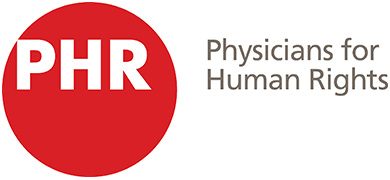This post is also available in: العربية
“We didn’t know which hospitals were still standing and which ones were in ruins. We didn’t know who was dead and who was alive. We were completely disoriented. Completely overwhelmed. Patients were streaming into the hospital non-stop… A single medical worker taking a break could have meant the death of a patient. That pressure only rose as more hospitals and clinics were destroyed.”
Rami, a health care professional working at a prominent hospital during the last offensive on Eastern Ghouta (PHR case study)
Since 2011, war and untold suffering in Syria have created a bleak landscape for human rights, justice, and accountability. In the spring of 2011, peaceful protesters took to the streets across Syria, demanding basic human rights and dignity. They were met with a fierce crackdown by the Syrian government. That violence has since spiraled into a brutal and protracted conflict that has devastated the country.
Hundreds of thousands of Syrians have been killed in the fighting, millions have been displaced, and tens of thousands remain missing. Health professionals and other civilians have been relentlessly and unlawfully targeted, and international laws and treaties blatantly disregarded. Millions of Syrians who have relied on internationally supplied and protected humanitarian aid have watched humanitarian corridors shut, and already scares supplies dwindle. Despite multiple peace talks and United Nations (UN) Security Council resolutions – a number of which were vetoed by Russia and China – the fighting and suffering have continued. The devastation caused by the 2023 earthquake in Syria has only compounded daily struggles for survival, leaving Syrians grappling with unimaginable loss and destruction, further complicating the path toward recovery.
Since the uprising began, Physicians for Human Rights (PHR) has used research, investigative, and training methodologies – combined with advocacy based on its unique medical voice – to advance efforts to secure justice and accountability for human rights abuses committed in the Syrian conflict. Our online, interactive map documents attacks on health care facilities and the killing of medical personnel, and provides location information and details on attacks which PHR was able to independently corroborate – 90 percent of which have been committed by the Syrian government and/or its Russian allies.
Below, we chart an interactive retrospective of some of the key moments that have defined this conflict, year by year. Alongside these events, we trace efforts for documentation and accountability, and PHR’s growing tally of hospitals bombed and health care workers killed.
Tracing a Decade of Deadly Conflict
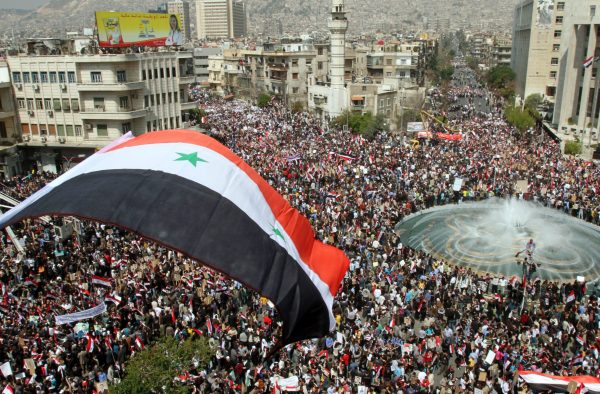
Protests erupt in Syria, sparking a nation-wide revolution
Demonstrators in Daraa protest the detention and torture of students for anti-government graffiti. Protests erupt across the country calling for freedom, democracy, and social justice and are met by the Syrian government with force; within a few weeks, more than 200 people are killed. The government begins a sustained campaign of extreme violence and intimidation, including an all-out assault on the country’s medical system.
PHR begins to investigate attacks on health workers
Government forces enter Daraa National Hospital, clear it of non-essential staff, and position snipers on the roof to ensure that only government soldiers or civilians from government-controlled neighborhoods can receive care.
Establishment of the Independent International Commission of Inquiry on the Syrian Arab Republic
In August, the UN Human Rights Council establishes the Independent International Commission of Inquiry on the Syrian Arab Republic (COI) to investigate all alleged violations of international human rights law in Syria since March 2011.
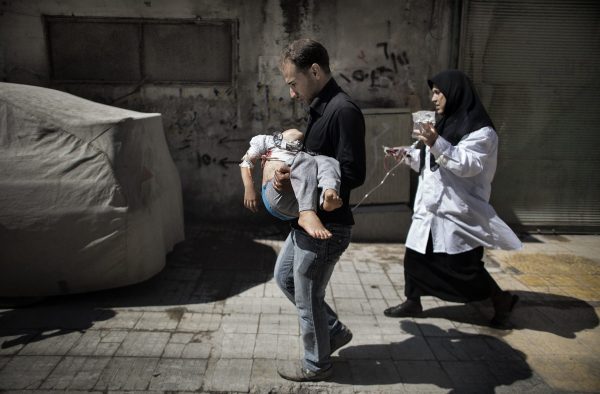
Government begins widespread detention of medical personnel
The Syrian government pursues a strategy of targeting and detaining medical personnel as punishment for providing medical treatment to injured protestors or to civilians denied medical treatment in government hospitals.
PHR verifies 89 attacks on health care facilities in Syria throughout the year
In an August attack, government forces repeatedly shell a field hospital in Homs for two days, hitting it with 20 shells.
President Obama issues “red line” statement
In August, U.S. President Obama states that the movement or use of chemical weapons by the Syrian government would be a “red line” that would change his administration’s calculus of the conflict. Meanwhile, the UN General Assembly condemns the violence in Syria and backs the Arab League’s proposal for a political transition.
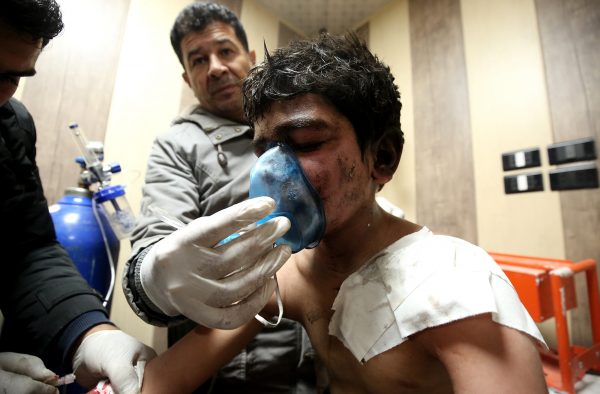
First large-scale chemical weapons attack on civilians
On August 21, the first large-scale use of chemical weapons in Syria occurs in Eastern Ghouta, killing more than 1,400 civilians and sparking international outrage. PHR calls for an independent investigation.
PHR verifies 48 attacks on health care facilities in Syria throughout the year
In June, a bomb is dropped on al-Raqqa National Hospital, destroying its intensive care unit. In July, government forces destroy Jaban Hospital in Aleppo after sustained shelling and aerial bombardments. More.
UN Security Council adopts resolution on the use of chemical weapons
On September 27, the United Nations Security Council (UNSC) unanimously adopts Resolution 2118 on the use of chemical weapons in Syria. This resolution requires the verification and destruction of Syria’s chemical weapons stockpiles, calls for the convening of the Geneva II peace talks, and endorses the establishment of a transitional governing body in Syria.
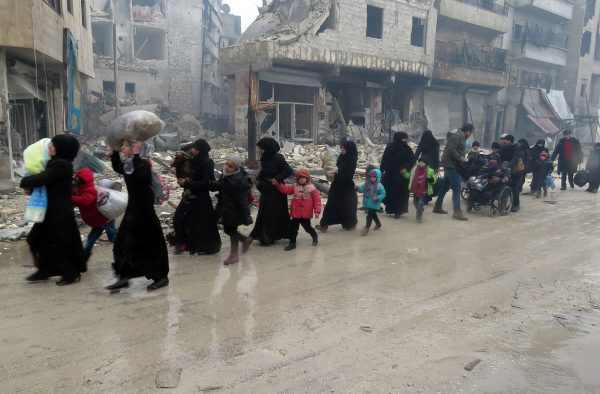
Health workers, their patients, and civilians are targeted with deadly force while massive displacement continues
Despite chemical weapons agreement, a crisis continues for Syrian refugees and IDPs: more than two million people have fled Syria and 4.25 million are internally displaced. More.
PHR verifies 86 attacks on health care facilities throughout the year
In April, government forces drop a barrel bomb filled with chlorine gas near Wisam Hospital in Kafr Zita. Patients and medical staff are forced to evacuate in order to escape toxic fumes, and medical service is interrupted.
In June, government forces aerially bombard the Orient Hospital, in Kafr Nabl, Idlib with a guided vacuum missile, damaging the dialysis center, pharmacy, and equipment. A newborn baby is killed, along with a doctor and an anesthesia technician.
UNSC Res 2165 authorizes cross-border humanitarian aid in Syria
After the Syrian government fails to fulfil its obligations under UN Security Council Resolution 2139, the UNSC adopts Resolution 2165, which authorizes cross-border and cross-line access for the UN and its partners to deliver humanitarian aid in Syria.
Russia, China block Security Council referral of Syria to International Criminal Court
In May, Russia and China block the adoption of a UN Security Council resolution giving the International Criminal Court a mandate to investigate human rights violations in Syria.
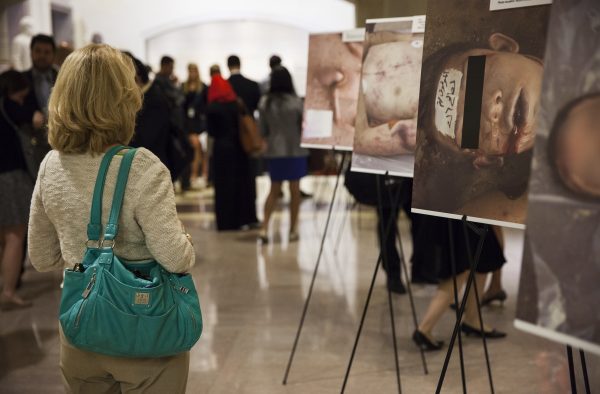
Release of the “Caesar Photos,” documenting torture and deaths of detainees held by the Syrian government
An official forensic photographer for the Syrian military police, using the alias “Caesar,” defects and smuggles out of the country more than 50,000 photos of the bodies of detainees who have died in Syria’s detention centers. PHR’s team of forensic pathologists review the images for evidence of torture and cause of death to verify their authenticity.
PHR verifies 123 attacks on health care facilities throughout the year
On September 30, Russia begins its first aerial bombing campaign in support of the Syrian government, and repeatedly targets hospitals.
In the early morning of October 16, a series of airstrikes hit al-Hader Hospital in southern Aleppo, damaging the facility, equipment, and supplies. The hospital’s electricity is also cut, putting it out of service, and patients are evacuated. Sources believe the attack was carried out by Russian warplanes.
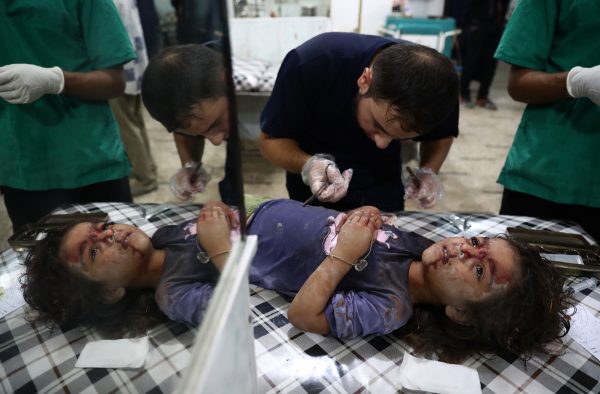
Syrian Government retakes eastern Aleppo
By the end of the government’s campaign to capture the city from the opposition, 95 percent of Aleppo’s doctors have fled, been detained, or been killed.
PHR verifies 109 attacks on health care facilities throughout the year
Attacks against health care remain high, including many from the Syrian government’s siege and assault on opposition-controlled eastern Aleppo. In one of many such attacks in July, Syrian government and/or Russian warplanes bombard Atarib Hospital in a series of strikes. The facility suffers significant damage and the hospital is put out of service.
In Idlib province, at least seven are killed in another attack against an MSF-supported hospital.
Establishment of the IIIM for Syria and the adoption of UNSC Res 2286, condemning attacks against medical facilities and personnel in conflict settings
The UN Security Council unanimously adopts Resolution 2286 condemning attacks against medical facilities and personnel in conflict situations. Meanwhile, the UN General Assembly adopts a resolution establishing the International, Impartial and Independent Mechanism (IIIM) to assist in the investigation and prosecution of those responsible for the most serious crimes under international law committed in Syria since March 2011.
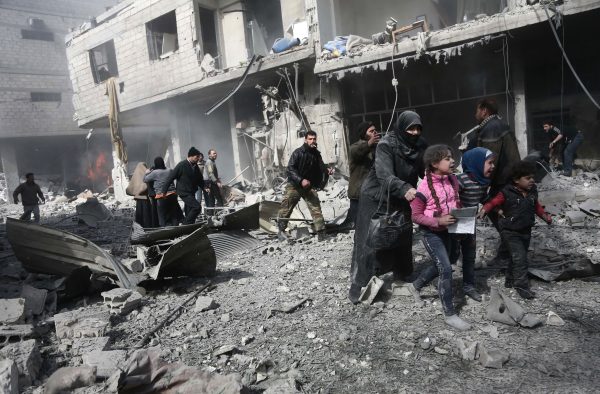
Syrian Government launches military offensive to retake control of eastern Ghouta
After four years of besieging eastern Ghouta, the Syrian government launches a military offensive between February and April to retake control of the region. Within the first day of the offensive, five health facilities are reportedly attacked and either heavily damaged or destroyed. By the end of the offensive, humanitarian and civil society organizations on the ground report 31 attacks on 26 separate medical facilities. More.
PHR documents 39 attacks on health care facilities in Syria throughout the year
The Syrian government or its Russian allies launch five aerial attacks on three of the main hospitals in Syria’s Idlib governorate, which is part of the so-called de-escalation zones. Three of these attacks take place on the same day.
Chemical weapon attack on Khan Shaykhun
On April 4, just before daybreak, Syrian government aircraft launched an assault on the town of Khan Shaykhun in an opposition-held area of Idlib province. The payload includes a chemical agent, reportedly sarin – among the deadliest toxins in existence. This chemical attack kills more than 80 people. A few hours later, number of airstrikes targeted al-Rahma hospital while medical staff were treating chemical attack victims. The hospital suffered material and structural damage and was forced to suspend operations.
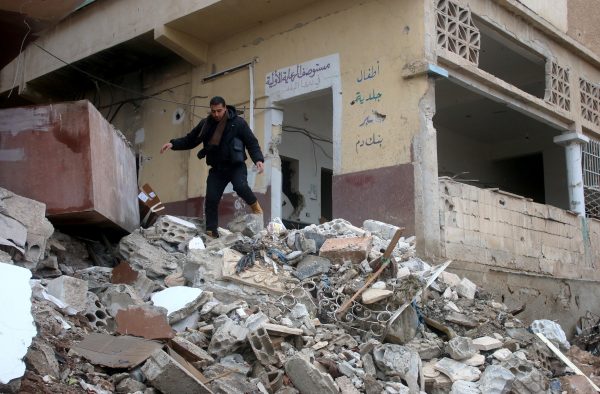
Government wages an offensive on Daraa
The Syrian government wages a campaign to retake control of Daraa province, targeting and destroying much of the region’s health infrastructure and facilities as a deliberate strategy of war.
PHR verifies 58 attacks on health care facilities throughout the year
PHR verifies 58 attacks on health care facilities in Syria during 2018. Impunity continues for attacks on health, and attacks continue to occur, often against repeat targets. Kafr Zita Specialty Hospital in Hama is attacked for the thirteenth time.
Impunity continues for the use of arbitrary detention, forced disappearance, and torture
The Syrian government continues to target health care workers and other civilians for arbitrary detention, forced disappearance, and torture, with complete impunity.
A major PHR investigation into the targeting of health professionals exposes how the Syrian government has criminalized the provision of nondiscriminatory care to all, regardless of political affiliation.
UN Board of Inquiry is established
The UN Secretary-General establishes a UN Board of Inquiry to investigate the destruction of UN-supported facilities and facilities on the UN deconfliction list, including health facilities, targeted during the Syrian and Russian governments’ offensive in northwest Syria.
PHR briefs the UN Security Council on attacks on health and the humanitarian crisis in Syria.
Russia, backed by China, casts 14th UN Security Council veto on Syria to block cross-border aid
Russia and China veto a UN Security Council resolution that would have allowed cross-border humanitarian deliveries for an additional 12 months from two crossings in Turkey and one in Iraq.
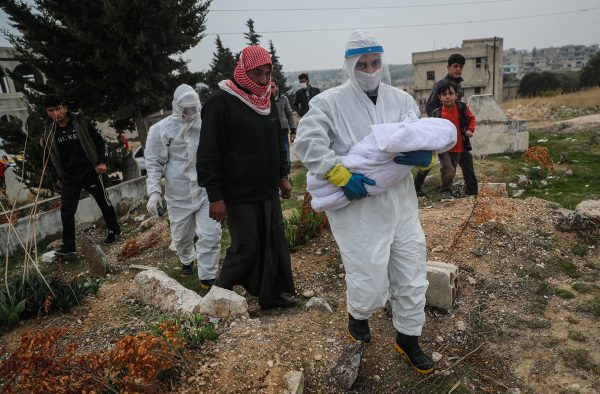
COVID-19 hits Syria, further weakening a crippled health system
The Syrian government’s targeting of health care workers and other civilians for arbitrary detention, forced disappearance, and torture continues with complete impunity. A major PHR investigation into the targeting of health professionals exposes how the Syrian government has criminalized the provision of nondiscriminatory care to all, regardless of political affiliation
Daraa’s health system remains largely destroyed and under-resourced
PHR’s investigation records the decline of the health system in Daraa province since its return to government control in 2018, leaving a once functioning health sector unprepared for the COVID-19 pandemic and other public health threats.
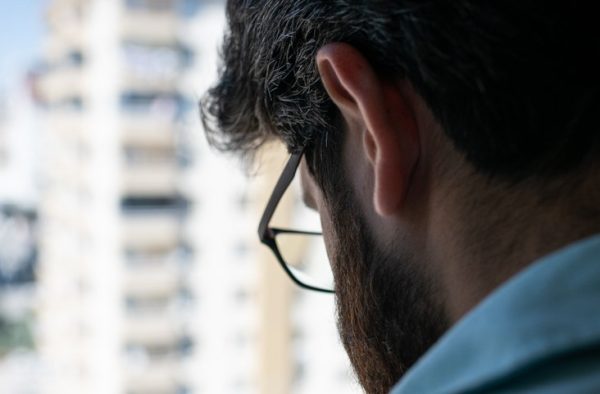
Hundreds of health care workers missing since uprising’s onset, targeted for providing care
PHR’s investigations reveal that health care workers in Syria were significantly more likely be tortured and experience ill-treatment when detained, die in detention facilities, or be forcibly disappeared if they had provided medical care to injured protesters compared to health care workers arrested for political reasons.
Health crisis continues in Northern Syria
PHR’s research shows how the Syrian government’s attacks on health infrastructure in northern Syria and its attempts to impede the delivery of humanitarian aid have driven the creation of a patchwork of health systems that has produced deep disparities in access to care, effectively denying people’s right to health.
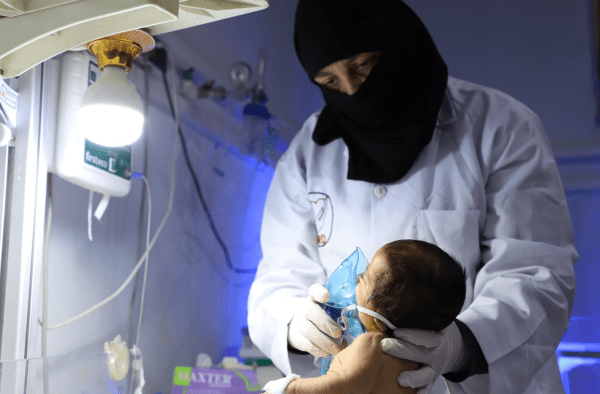
Health disparities worsen for women and girls
PHR documents how targeted violence against health care personnel and infrastructure has impeded vital sexual and reproductive health care, resulting in far-reaching tolls on the health and wellbeing of women, girls, and health care professionals.
Earthquake deepens health crisis amid Russian veto on Syrian aid
A catastrophic earthquake strikes Syria and Türkiye on February 6, exacerbating the existing crises endured by Syrians. After years of war, atrocities, disease outbreaks, economic collapse, aid obstruction, and neglect, the health system in northern Syria has already been severely battered. On July 12, Russia severs a crucial cross-border lifeline from Türkiye, further jeopardizing the health, rights, and well–being of over 4 million people.

Recommendations
As the Syrian conflict continues but recedes from the headlines, it is critically important to redouble efforts to uphold, promote, and respect the human rights of the Syrian people, and all who have been and still are impacted by this immense humanitarian and human rights crisis. Below we outline key actions that governments and international institutions must take now on justice and accountability, detainees and missing persons, and humanitarian access.
Justice and Accountability
Perpetrators of attacks on health to be held responsible in a court of law.
The Syrian conflict is marked by widespread human rights violations, war crimes, and a massive refugee and displacement crisis. These violations could constitute crimes against humanity and war crimes. As part of its mission to document human rights abuses, PHR has documented, as of March 2024, 604 attacks on hospitals and other health care facilities since the start of the conflict. These illegal attacks leave communities without the critical health care infrastructure they rely on. Our interactive map showcases the years, locations, and alleged perpetrators of these attacks.
PHR’s recommendations:
To the Syrian Arab Republic:
- Cooperate with international justice mechanisms working to investigate crimes and violations committed during the Syrian conflict; and
- Stop intimidating, threatening, arresting, disappearing, torturing, and killing health care workers.
To Officials in Charge of International, Regional, and National Justice and Accountability Mechanisms:
- Because China and Russia – allies of the Syrian government on the United Nations Security Council – have blocked referral of the situation in Syria to the International Criminal Court (ICC), it is critical that officials in charge of other international, regional, and national justice and accountability mechanisms move forward to address the human rights abuses and war crimes committed in Syria. There are many international, regional, national, and hybrid justice and accountability models that are flexible enough to meet the unique requirements of these cases. In addition, courts and prosecutors in countries that may be willing to investigate and prosecute war crimes and grave human rights abuses nationally under universal jurisdiction can and should pursue accountability, justice, and remedies for these crimes. A recent successful prosecution in a German court of a former member of Syria’s security services for torture provides a roadmap for how such cases can be advanced in national courts in other countries.
To the United Nations:
- Continue to document and report on attacks against health care in Syria and other grave human rights abuses, and share documentation with international courts and other justice mechanisms pursuing accountability for such crimes; and
- Work to strengthen the implementation of UN Security Council Resolution 2286 to protect health facilities and personnel from attack and hold perpetrators for these violations accountable.
To the United States Government:
- Investigate and prosecute possible perpetrators of crimes in Syria who are present in the United States; and
- Provide any additional resources and support that may be needed to advance the work of the UN Independent, Impartial, and Investigative Mechanism, and the Commission of Inquiry.
Detainees and Missing Persons
The Syrian government must releasee the truth about the fate of the missing and disappeared.
The Syrian government has detained tens of thousands of people since the start of the conflict in 2011. Many have been forcibly disappeared as families desperately seek information about their fate. In the report “’My Only Crime Was That I Was a Doctor’: How the Syrian Government Targets Health Workers for Arrest, Detention, and Torture,” PHR documents the systematic arrest of health care workers and the physical and psychological torture many were subjected to. PHR calls on all parties to the conflict, particularly the Syrian government and affiliated forces, to cooperate with the independent Institution on Missing Persons in Syria, as mandated by the UN General Assembly resolution that called for its establishment.
PHR’s recommendations:
To the Syrian Arab Republic
- Immediately and unconditionally release all arbitrarily or unlawfully detained or forcibly disappeared people from official and unofficial detention sites, starting with the most vulnerable, including children, women, the elderly, the disabled and the health care workers;
- Cooperate with the independent Institution on Missing Persons in Syria, once established, by disclosing the locations of all official and unofficial detention sites, providing comprehensive lists of all those held in those sites and sharing all information regarding the whereabouts of missing and disappeared persons, and provide the remains of the deceased to their loved ones;
- Improve detention conditions in compliance with international standards, including through ensuring detainee contact with families, access to medical care, and sufficient water and food, as well as preventing torture, ill-treatment, and sexual violence.
To the U.S. Government:
- Facilitate consensus within the international community, particularly with countries that have normalized relations or are in the process of normalization,
- Call for the release of arbitrarily arrested detainees and those subjected to enforced disappearance as part of ongoing and future peace negotiations.
Humanitarian Access
Syrians need urgent access to essential health care services.
Since the start of the Syrian conflict, many Syrians have relied on UN-facilitated aid deliveries to support them. The UN estimates that more than 13 million Syrian civilians are in need of aid, including the six million who are internally displaced. Since 2014, the UN has authorized humanitarian aid deliveries to reach Syrians, initially through four border crossings. In July 2023, the UN Security Council failed to adopt a resolution to ensure the uninterrupted flow of humanitarian aid to the northwest, as a result of the Russian veto. Consequently, the Syrian government has assumed direct control over UN humanitarian aid, possessing the authority to approve or obstruct humanitarian corridors to the northwest of Syria.
PHR’s recommendations:
To the Syrian Arab Republic:
- Expand access for desperately needed humanitarian aid to areas retaken by the government.
To the United Nations:
- Pressure the Syrian government to permit the delivery of aid and allocation of health services so that organizations such as the WHO and other UN agencies, international NGOs, and local actors can reach populations in a neutral, effective, and equitable manner; and
- Reopen all viable border crossings to upscale the distribution of humanitarian aid, enabling affected communities to recover from the devastating impact of the 2023 earthquake.
Supported with German Federal Foreign Office’s funds by ifa (Institut für Auslandsbeziehungen), Funding programme zivik.
